Less is more in the Encounters section of Art Basel in Hong Kong this year. Alexie Glass-Kantor, the executive director of Artspace in Sydney and the returning curator of Encounters, has reduced the number of large-scale sculptures and installations from 20 to a spare 16. Eight of these are “premieres” developed by the artists and their galleries for the fair.
From an amphitheatre of protest placards by the young Indonesian collective Tromarama to Richard Maloy’s hulking mass of yellow cardboard around a column, the works “have more room to be articulated” in the cavernous spaces of the Hong Kong Convention and Exhibition Centre, Glass-Kantor says.
The selection also draws inspiration from the writer Milan Kundera’s definition of an encounter as “a spark; a lightning flash; random chance”. In an environment where art can be a serious business, visitors may welcome the absurd appearance of Isa Genzken’s awkward crowd of mannequins and Nathalie Djurberg and Hans Berg’s flock of pill-popping bird sculptures. “Joy is not overrated,” Glass-Kantor says. Shortly before the fair opened, she told us about the ideas behind a few of the works she had chosen. The curator, together with Encounters artists Brook Andrew, Charles Avery and Tintin Wulia, take part in a Salon talk during the fair (Encounters: New Materialities, Thursday 24 March, 6pm-7pm).
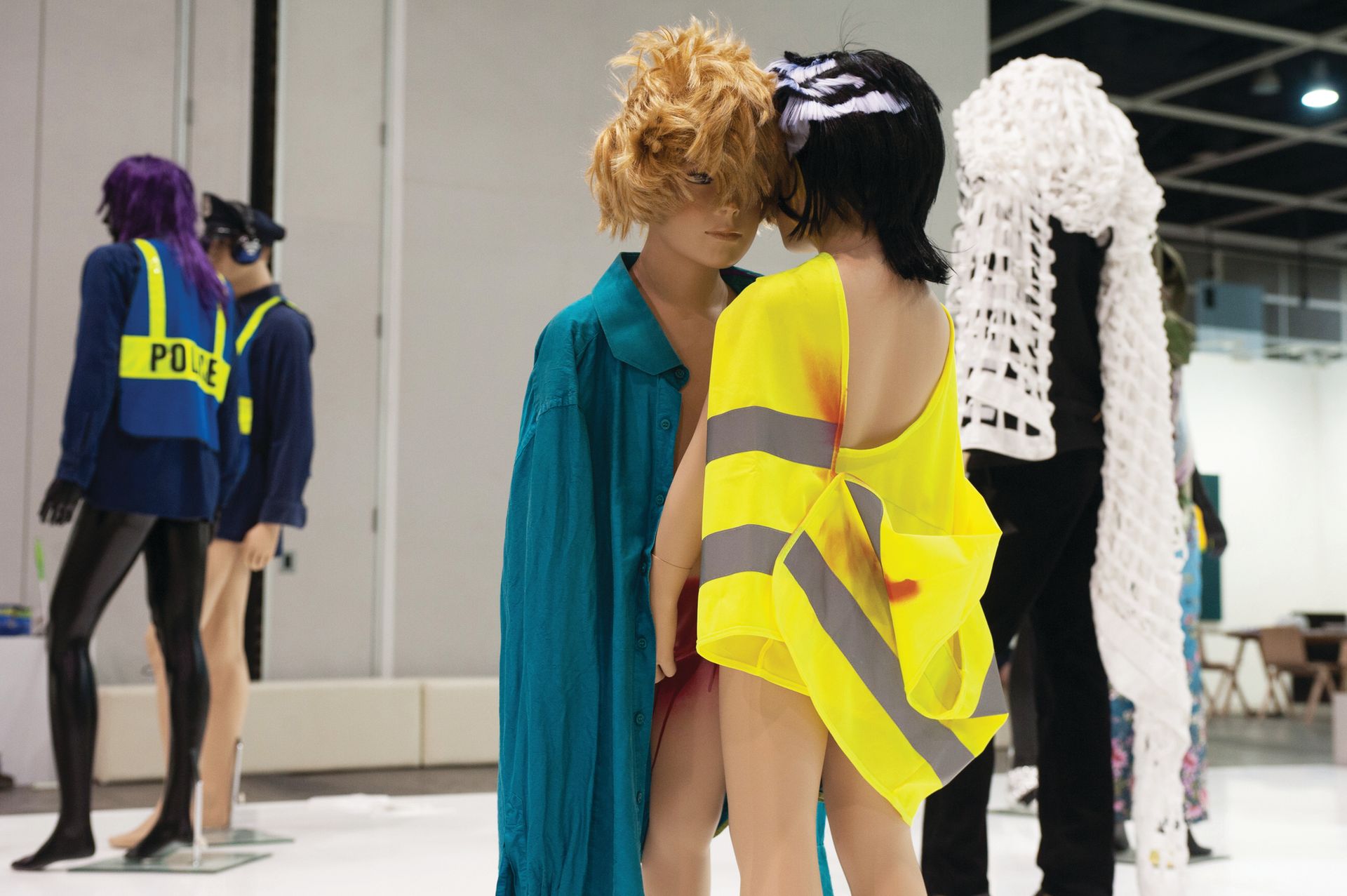
Isa Genzken, Schauspieler (Actors) (2014-15), E7 (David Zwirner, 1C21)
It was great to have Isa come on board, given the interest in her work in the region. She decided to make one of her assemblies especially for Hong Kong. It’s got elements of pre-existing works because she lifts from her own practice all the time. I do like the awkwardness of this encounter. I feel that there is always, in any encounter between two individuals, a sense of uncertainty. To speak to that in this performative environment is fantastic.

Nathalie Djurberg & Hans Berg, A Thief Caught in the Act (2015), E13 (Lisson, 1C20)
This is such a rare opportunity to see Nathalie’s sculptures in depth and it’s a new work. I love the peculiar, magical whimsy, that transformation of everyday things that become otherworldly—in this case the truly altered states of ingesting stolen pharmaceuticals. These hapless creatures have a permanent spotlight cast upon them. There’s something quite wonderful about an encounter that’s on the borderline between being beautiful and utterly menacing.
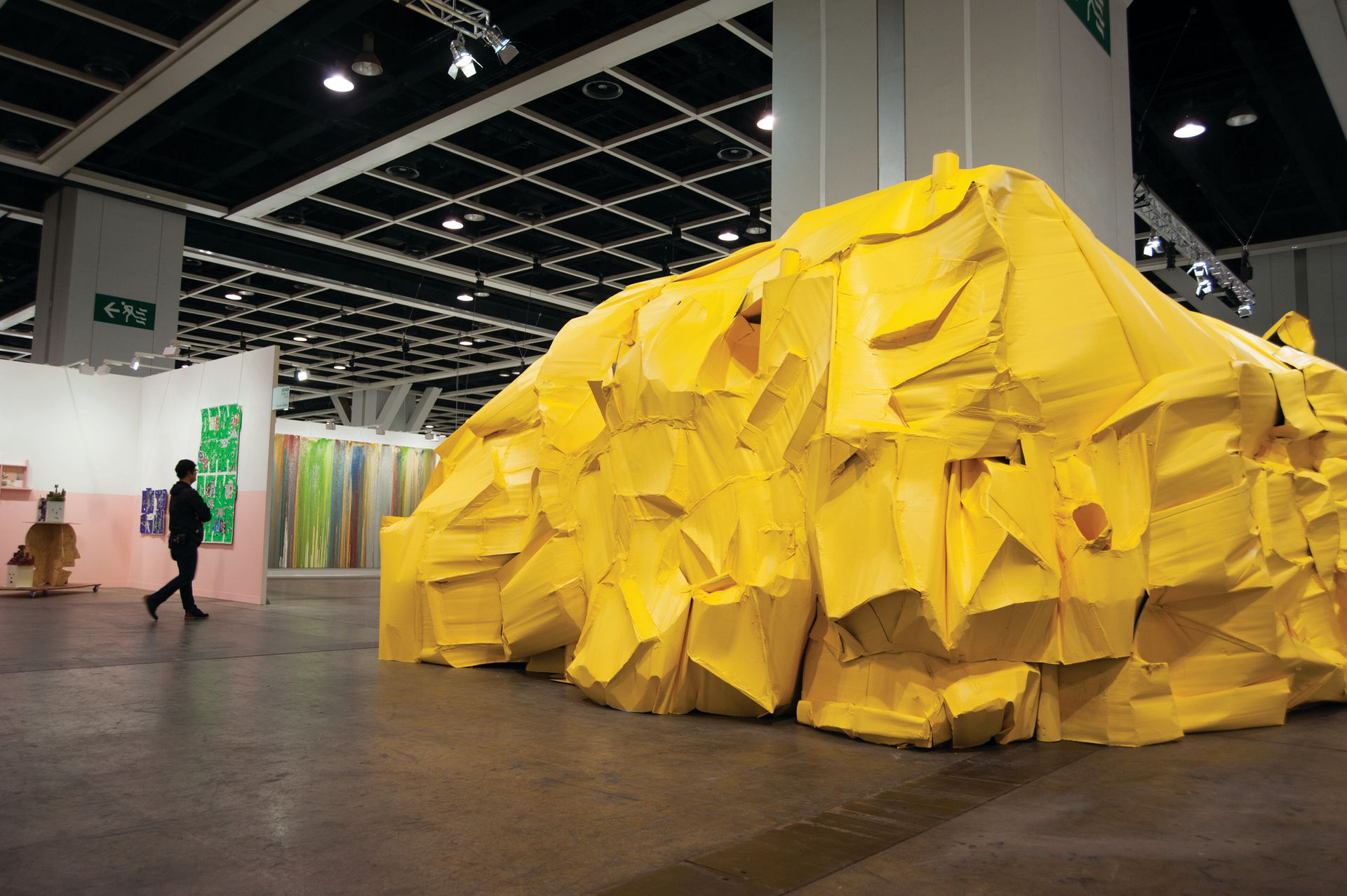
Richard Maloy, Yellow Structure (2016), E4 (Starkwhite, 1C03)
When we think about Hong Kong we think about accelerated forms of creating spaces to occupy. This work speaks in a very intuitive way to that context. There’s an element of provisionality, using ephemeral materials to create a kind of shelter. The audience will be invited within its humble underbelly. The cardboard will end up in the recycling at the end of the fair. I think it’s important to represent artistic practices that aren’t just objects being shipped in and out.
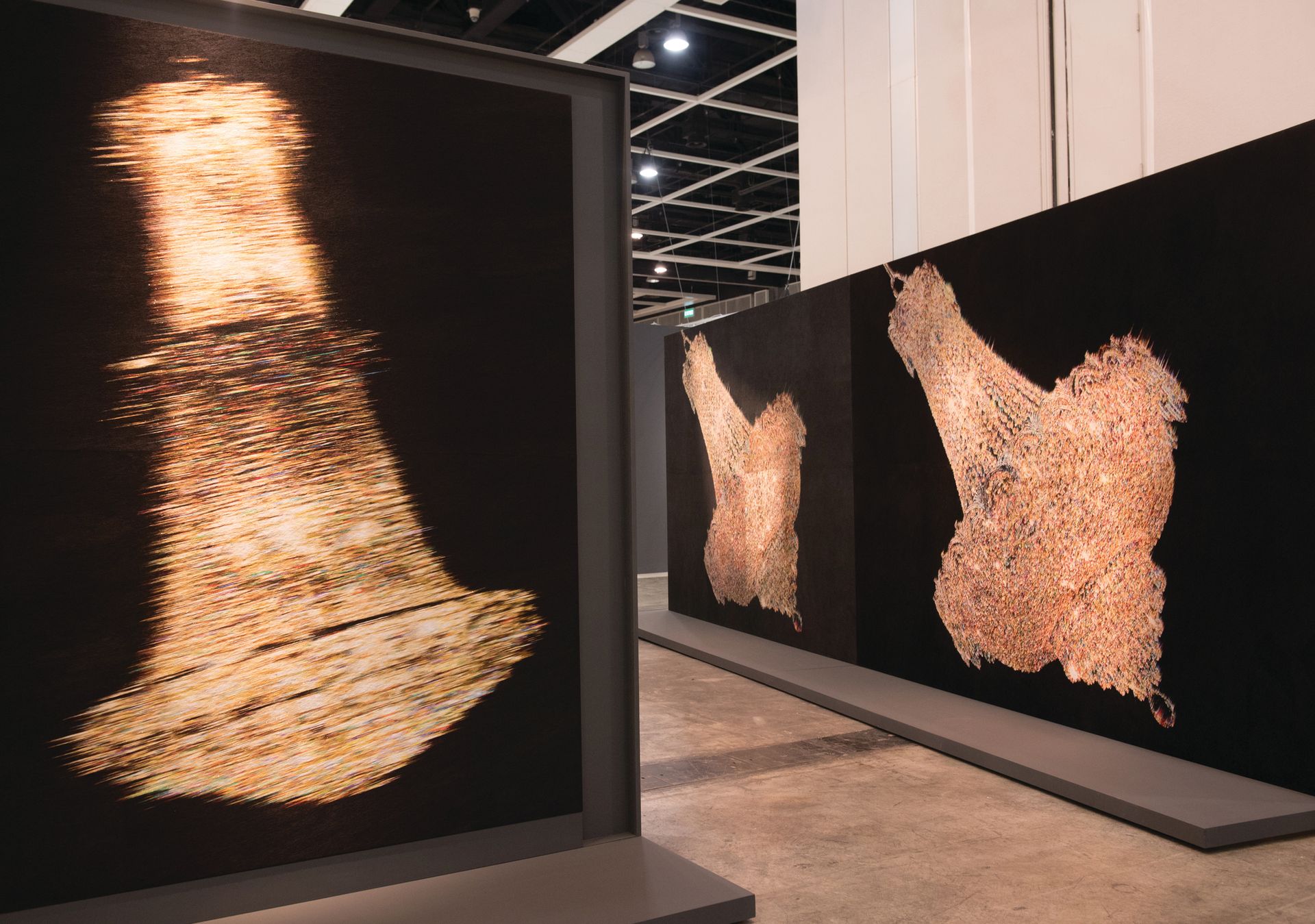
Kyungah Ham, Chandeliers for Five Cities (2016), E15 (Kukje/Tina Kim, 1C13)
Kyungah began collaborating with women in North Korea around five years ago. Her drawings and collages are smuggled by intermediaries across the border. The women interpret them through embroideries and they are smuggled back as a form of conversation. She’s been sending things that they will never see represented in their own media. She did early collages with images of 9/11. These are images of chandeliers taken from the palaces of Kim Jong-il and his family.
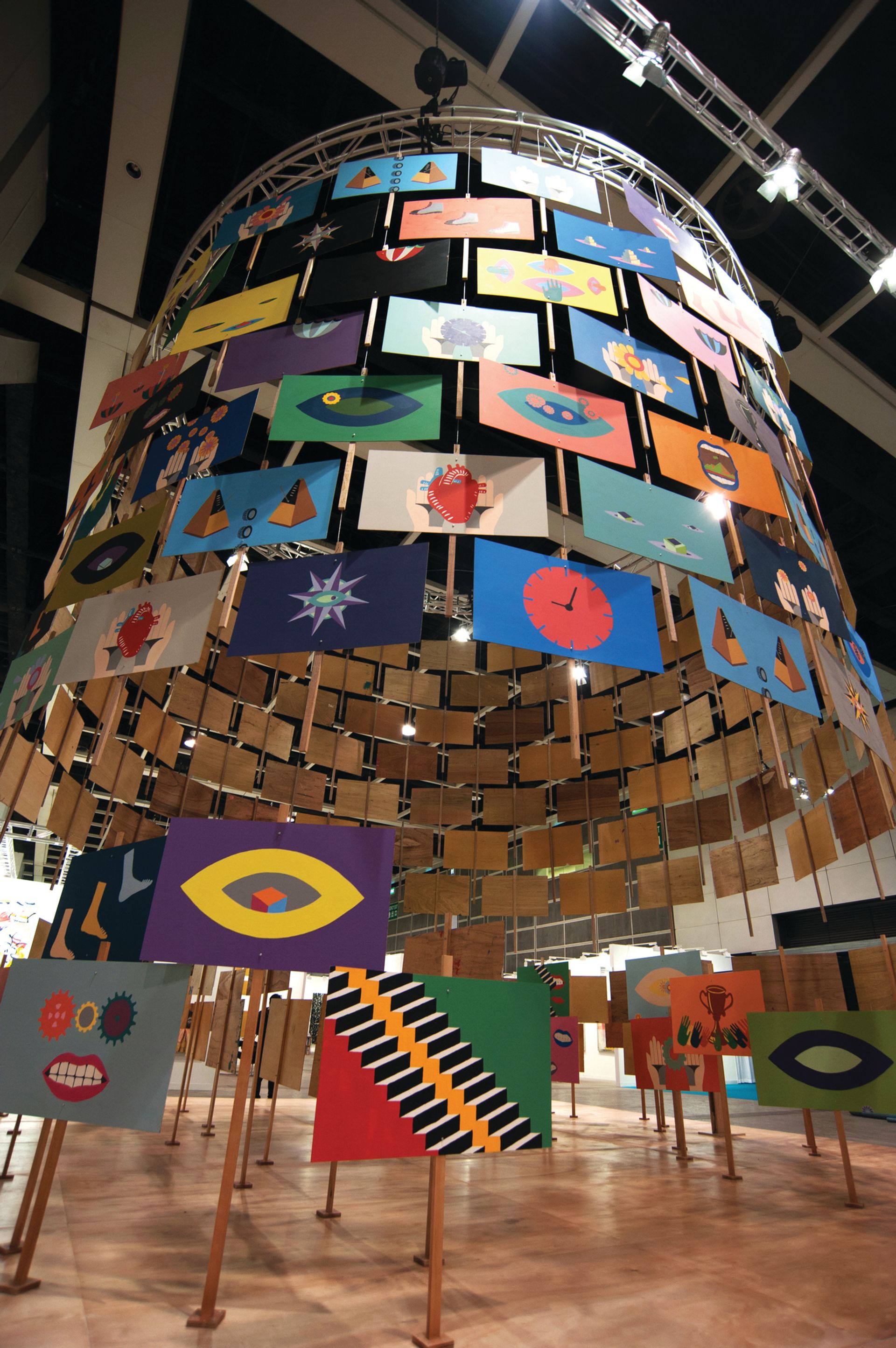
Tromarama, Private Riots (2014-16), E1 (Edouard Malingue, 3C09)
Tromarama’s practice has an agitprop, subversive but also highly aesthetic energy. It’s tied to a local (Indonesian) connection of environmental sustainability and protest but also to global social and political issues—climate change and inequity. The installation is comprised of 187 painted protest banners lifted from protests in Bandung in Java and redesigned. The artists also work with moving image. We developed this staging so the audience can walk in and have a different encounter with the space.
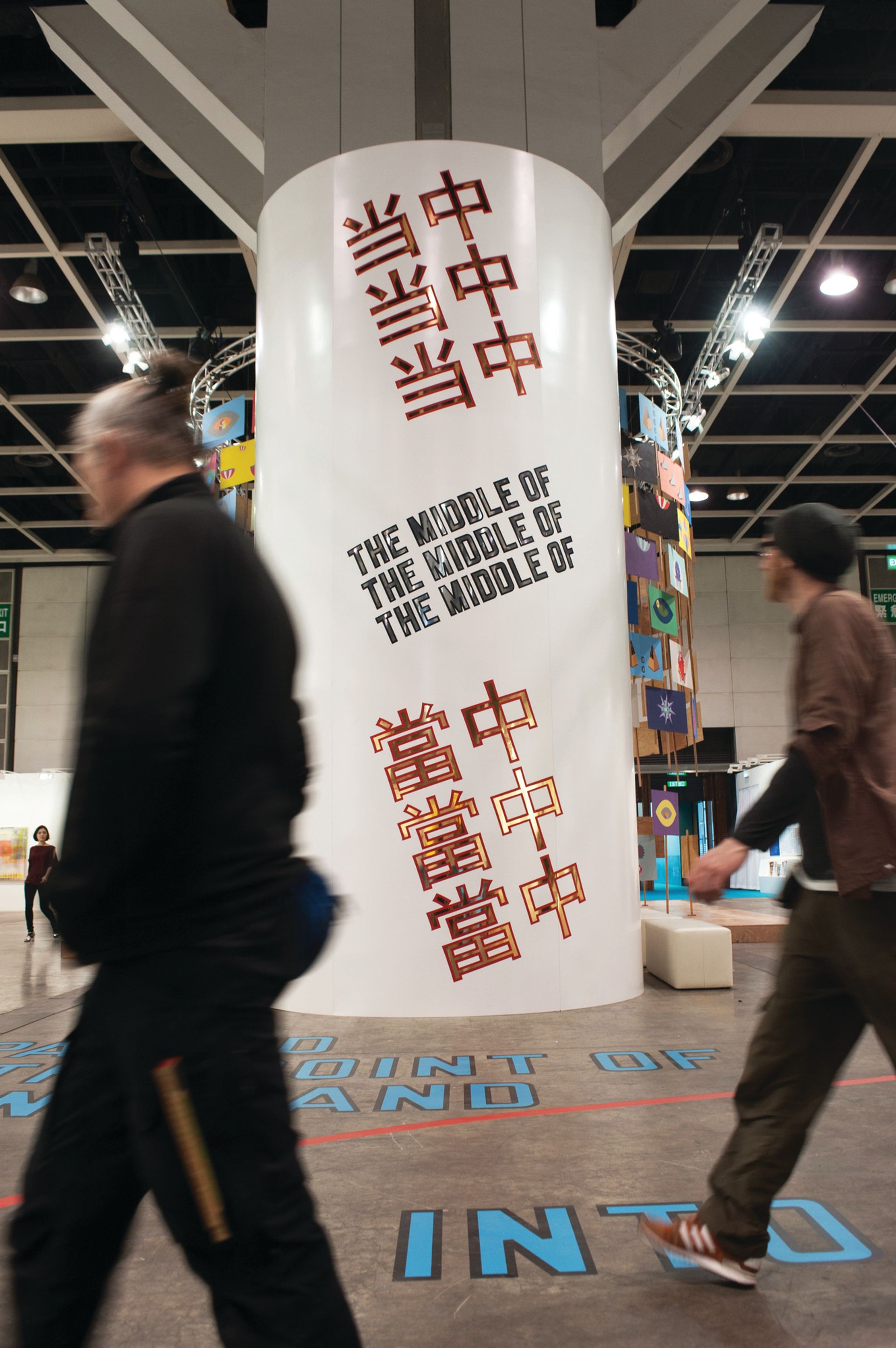
Lawrence Weiner
The Middle of, The Middle of, the Middle of (2012), E2 (Marian Goodman, 1C18)
When I met with Lawrence last year I explained to him what an encounter is and he said “So, it’s in the middle of everything?” In this work we translated “the middle of” to Cantonese and Mandarin. Then he created a floor work that the audience will persistently walk over for the duration of the fair. The meridian on the other side of level one has two further floor works as a way of prompting memory. The encounter isn’t sequestered to one place.

